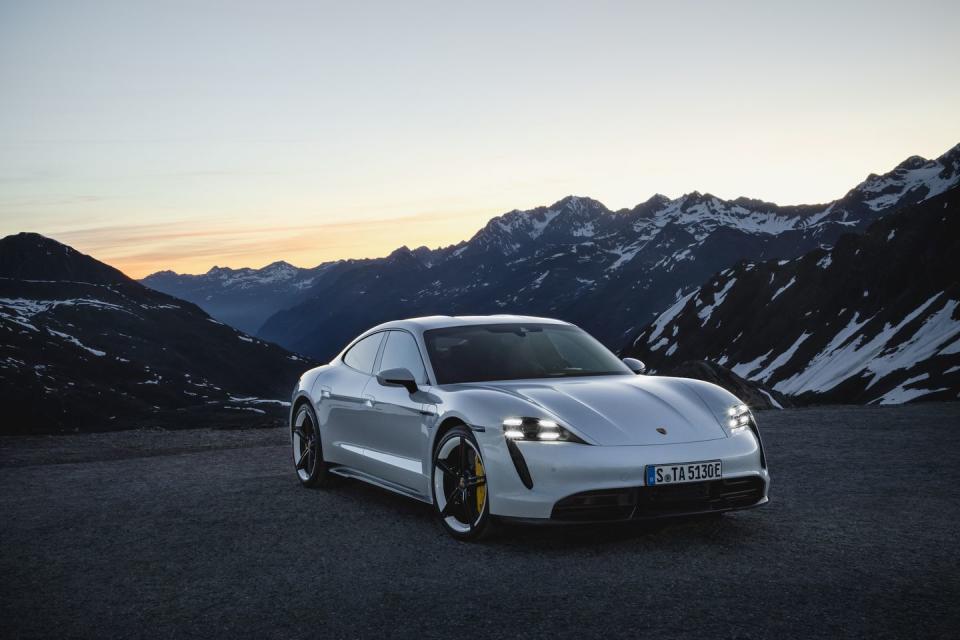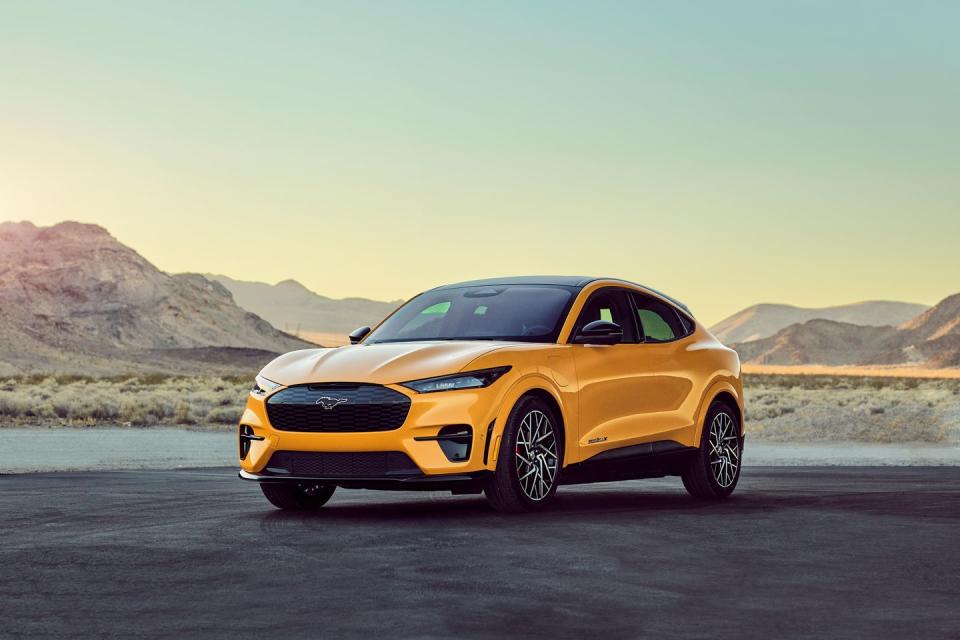Why EVs Might Never Reach "Price Parity" With Conventional Cars

The sighting of "price parity" between EVs and internal-combustion cars has become the auto industry’s white whale. It’s the buzzword that’s launched a thousand academic papers, Wall Street analyses and media blandishments, assuring us we’re "this close" to EVs that cost no more and no less than traditional automobiles.
But price parity has become a textbook case of garbage-in-garbage-out, of getting the wrong answers because you’re asking the wrong questions. It’s an illusion for any number of reasons, beyond government EV subsidies that put a thumb on the market scale. Let’s start with some easy ones: Whatever made you think the auto industry wants to sell you cheaper cars? As a corollary, who convinced anyone that people will buy cars based on maximum utility, economic or otherwise, when car buyers are as flawed and irrational as any other consumer (see the Nobel-winning work of the wondrous Daniel Kahneman)? Automakers may be transitioning to a new and more enlightened age. That doesn’t mean they’ll stop selling the Don Draper fantasy of cars that make you smarter, better-looking, the envy of your friends.
The idea of price parity seems welded to a single myopic variable: the tumbling curve of lithium-ion battery prices. According to Bloomberg New Energy Finance, prices for battery packs have fallen 89 percent since 2010, from a breathtaking average of $1100 per kilowatt-hour to $137 per kWh in 2020. General Motors and Tesla (the latter partnering with battery manufacturer CATL in China) appear to have driven pack prices below the $100-per-kWh level with measures including GM’s $2.3-billion low-cobalt Ultium battery plant. That Holy Grail price point, $100 per kWh, is indeed arriving years ahead of schedule. Next-gen solid-state batteries could deliver the breakthroughs in driving range, charging times, and battery life necessary to accelerate the transition away from fossil fuels and the internal combustion dinosaurs that burn them. No argument with any of that, as wildfires torch the globe and sea levels rise.
The problem is this dubious mental blackboard of price parity in which the down-sloping curve of battery prices finally intersects with IC production costs. Apparently, at that precise nanosecond of critical market mass, a Big Bang will vaporize IC cars and their consumer demand. We’ll wake up to an orderly universe of EV startups and reborn legacy brands. In that imaginary universe—which must include Marvel-esque charging infrastructure, 10-minute refills and 500-mile driving ranges for all—altruistic automakers will package all that brilliance into electric Toyota Yarises or Chevy Sparks and sell them for $16,000, a price on par with today’s IC versions. Or we’ll drive Mercedes S-Classes, larded with revolutionary technology, without having to pay a penny more.
But automakers had better hurry. The sticker price on today’s Nissan Leaf Plus sits stubbornly above $39,000, versus a sharper, better-equipped 2021 Sentra SR from $22,675. (Somehow, the price-parity gurus manage to avoid talking about prices, especially at the lower rungs of the market.)
There are several fatal fallacies here. One is that battery costs are the only shifting variable preventing EVs from costing the same as ICE cars. Secondly, that as those costs fall, automakers will pass every penny of savings to consumers. But if the cost of materials or labor were the sole driver of the price of a good, a pair of Air Jordans would cost about $17.99. An iPhone 12 Pro Max definitely wouldn’t cost $1100. A Porsche 911 S might cost $5000 more than a mid-engine Corvette rather than $55,000 more. Cars assembled in lower-wage southern states, or Mexico, would be priced lower than cars built in Michigan.
Those differences between costs and revenue? They’re called profits. Perhaps the price-parity gurus have heard of them. As ever, EV prices will depend on variables from design and engineering to brand image and marketing, not just battery bean-counting. There’s a reason Porsche banks $18,500 of profit for every car sold, an industry-leading 16.6-percent net margin. Or why an electric Taycan Turbo S starts from nearly $187,000, versus $99,000 for a comparable Tesla Model S Performance.

The car companies’ idea of parity, I’m afraid, is that all consumers should pay more. That’s exemplified by the average new-car price that, according to Edmunds, reached a record $40,107 in 2020, a dizzying climb from $29,217 in 2010.
The industry has been frank about its strategy: Budget cars are out, status cars are in. In America especially, the entire business model has been predicated on fleeing unprofitable car segments and luring customers into SUVs and pickups, garnished with luxury and tech features like so many shaved truffles. Why would they dream of killing their three-ton golden goose and going backwards?
Tesla fans will rightly point to the Model 3. It is the parity poster child at $39,190, on par with entry-luxury sedans. (Electric acceleration aside, a Model 3 may be closer to a $25,000 Mazda3 than a Mercedes C-Class, but let’s give them the benefit of the doubt). Yet a true definition of parity would mean EVs not merely costing the same as conventional cars, but generating similar profits; otherwise, it’s a house of cards. And unlike Mercedes or BMW, companies that bank billion of dollars in annual profits, Tesla barely generates lunch money from Model 3 sales. Tesla has no wiggle room at current prices, including for crucial investment in new model lines. For Elon Musk’s company to thrive, it must count on pocketing any savings from falling battery prices and manufacturing efficiencies, not passing them along to customers via lower prices. That picture may change over a few model cycles, meaning 10 or 12 years. But not by 2023 or 2025, as the most delusional parity predictions suggest.
Yes, there will always be a market for cheap cars, regardless of what powers them. Models like China’s Hongguang Mini microcar, whose $4200 tab, less than 10 percent of a Model 3’s, briefly made it China’s best-selling EV. But the smart money isn’t chasing bottom-feeders. Ride-sharing electrics offer an opportunity for commodity makers. But beyond the hype, that’s looking like a Hertz fleet by another name.
Certainly prices of ICs and EVs must begin to dovetail, if electrics are going to capture mainstream drivers. But for now, with the average car costing 40 grand, the apples-to-apples EV must be priced accordingly higher to have any hope of generating similar profits.
I’ll plant a flag at $50,000 for the new normal, the cushy baseline for EV parity. Specifically $49,990, the base fare of the Tesla Model Y Long Range, the kind of compact crossover that’s become America’s de facto family car. Not coincidentally, Ford priced its Mustang Mach E Premium AWD, the 270-mile-range model, right atop it at $50,800. For now, Mach E buyers enjoy $7500 in federal tax largesse, leaving buyers at $43,300, a bit over the IC median. But that $7500 doesn’t come out of Ford’s end. If it did, Ford may have been forced to nudge the sticker higher.

Those financial pressures are why most EV makers have stopped trying to impress consumers and compete for a pointless affordability crown; you may recall Chevy’s ill-fated bid to bring the Bolt to market at $29,995 after tax credits. Even with battery prices dropping 89 percent, car companies are sweating to make a business case. For automakers not named Tesla, they’re still not sure consumers are going to go for it. If consumers do, and battery prices fall further, it will behoove automakers to hold transaction prices steady and reap the rewards of their long-term investment in electrification. Bonuses all around! Any CEO who suggests otherwise would be strapped to an electric chair by shareholders and board members.
A base Chevrolet Bolt still stickers for $37,495 to start, nearly double the $19,600 price of the now defunct internal-combustion Chevy Cruze hatchback. Even at those luxury prices, UBS reports, GM lost $4000 to $5000 on every Bolt it sold. So it’s out with the everyman Bolt and in with the Cadillac Lyriq or GMC Hummer EV.
GM’s template for the Hummer EV isn’t some working man’s Chevy pickup but more a Mercedes G-Class, another triumph of marketing whose six-figure price was embarrassingly unrelated to its actual cost to produce. Did Mercedes cut prices as the old G-Wagon aged and amortized like some Deutsche Conestoga? Hell no. It played up the off-road and martial myth, dialed up AMG power and prestige, and charged more, just as GM will play up EV tech and capability to blow past the initial $63,000 price of the equally militaristic gas-powered Hummer H2. Crab walk, baby!
Those lessons in mind, EV makers now come swinging from the gate with their highest-priced, halo-shining models: A Taycan Turbo S, a Lucid Air Dream at $169,000, the Hummer EV Edition 1 at $112,595. More-affordable versions are promised, and (sometimes) delivered, but they feel like afterthoughts or reek of insincerity. Or, like the Hyundai Kona EV, they’ve not sold in 50 states, or suspiciously AWOL in showrooms. Tesla stood up fans entirely, turning its much-hyped, $35,000 Model 3 into an electric version of Waiting for Godot.
EV leaders, including Rivian founder R.J. Scaringe, Lucid CEO Peter Rawlinson, and GM’s Ken Morris, have all told me that luxury models will better absorb EV costs, while deep-pocketed demographics can better afford them. Even at reduced rates, those expenses loom large for electric SUVs and trucks with the beefiest battery packs. Rawlinson bemoans the trend of adding "dumb range" by stuffing in ever-larger batteries, but buyers demand at least a reasonable driving radius from a full charge. Despite Ultium’s efficiency gains, the 350-mile Hummer EV requires an elephantine, 200-kWh battery, double the storage of Tesla’s largest. Even at $100 per kilowatt hour, that’s $20,000 for the battery alone. Barring a battery revolution, what are the odds we’ll ever see a battery like that in an "average-priced" $40,000 SUV? Or electric Civics and Corollas for as little as $22,000, CR-Vs and Ford Escapes for $25,000?
So if I’m an automotive CEO, minding my fiduciary duty, and I’m asked when EVs will be priced comparably to today’s cars, my answer and hope would be the same: Never.
You Might Also Like

 Yahoo Autos
Yahoo Autos 